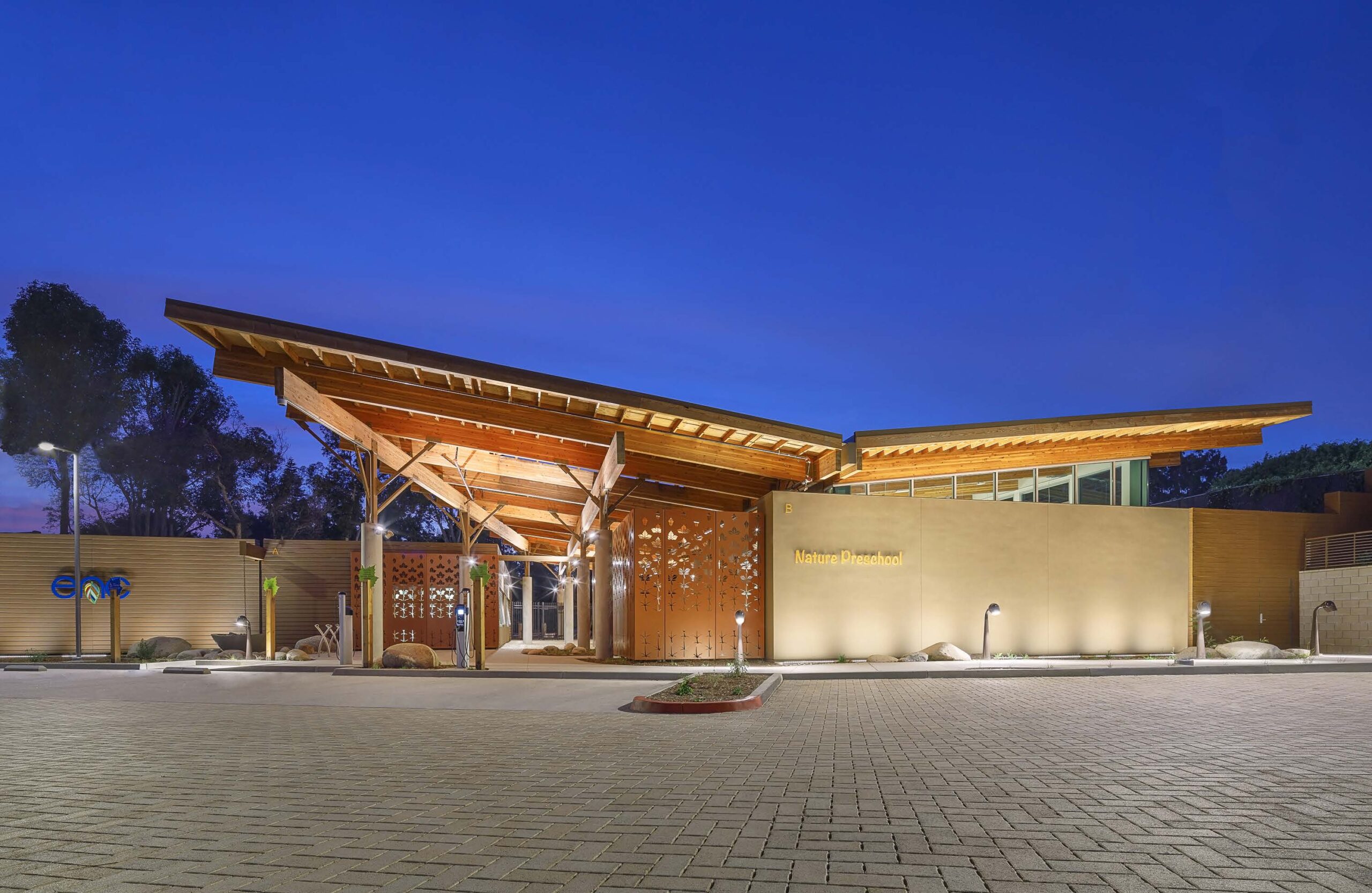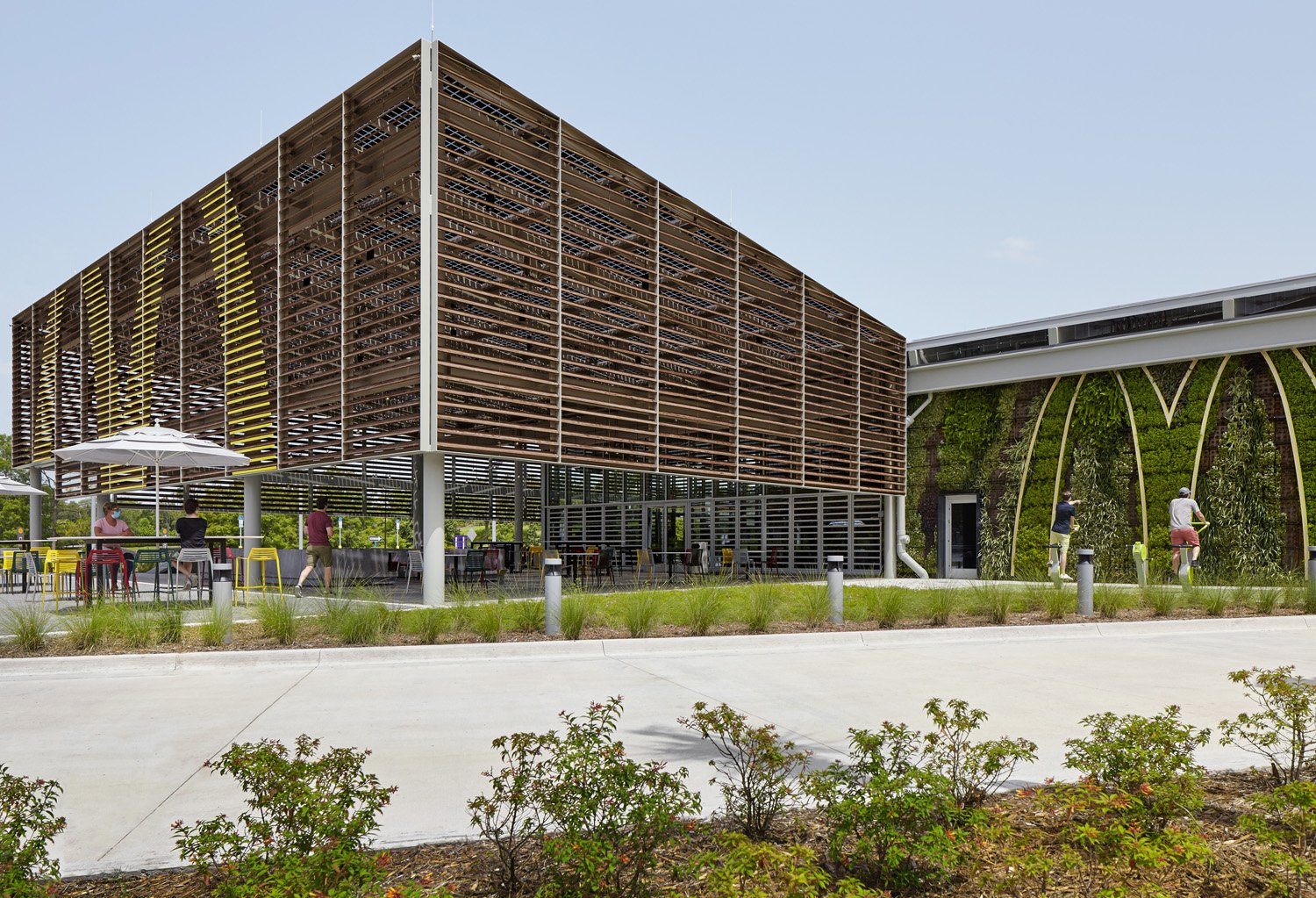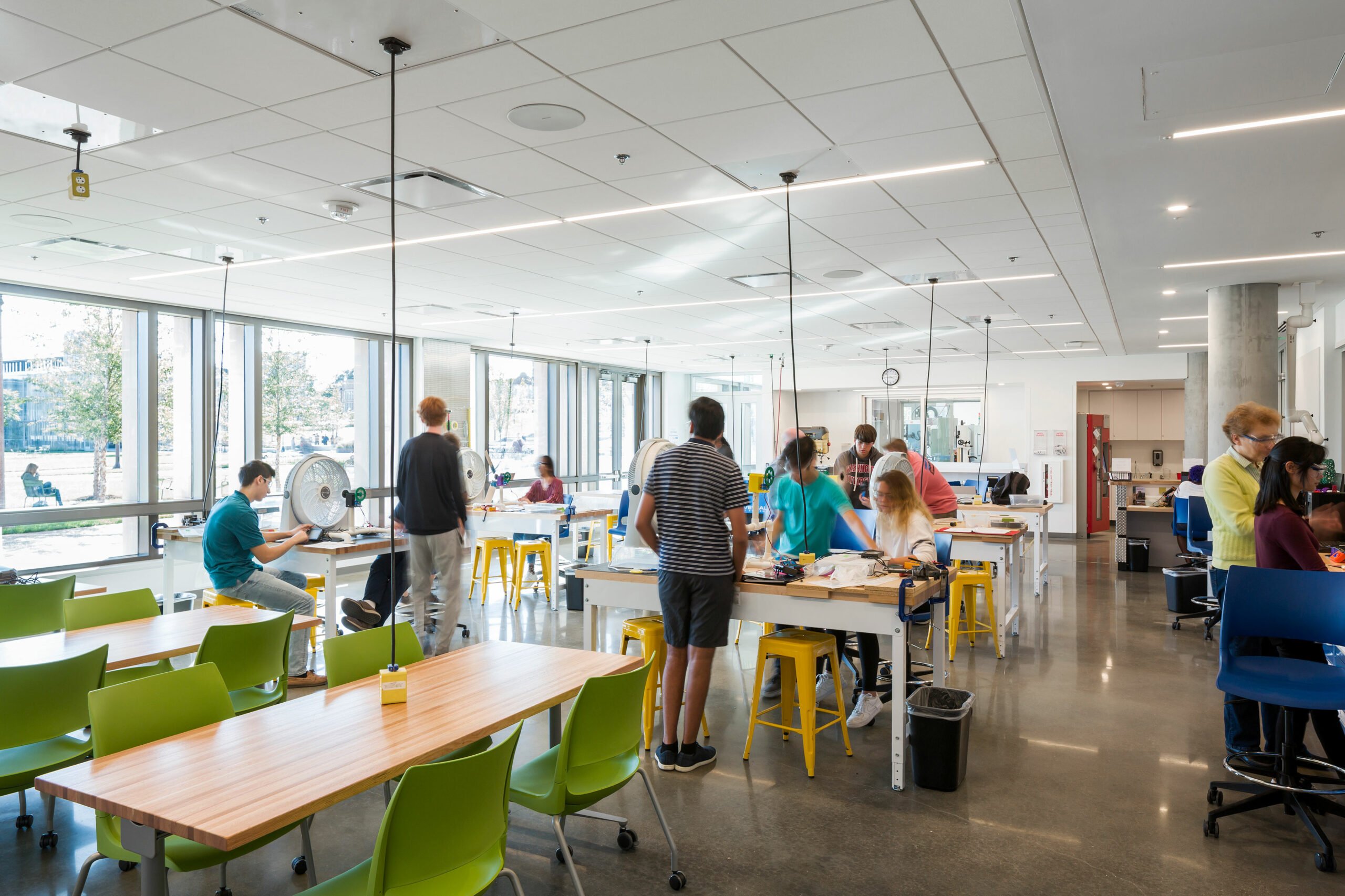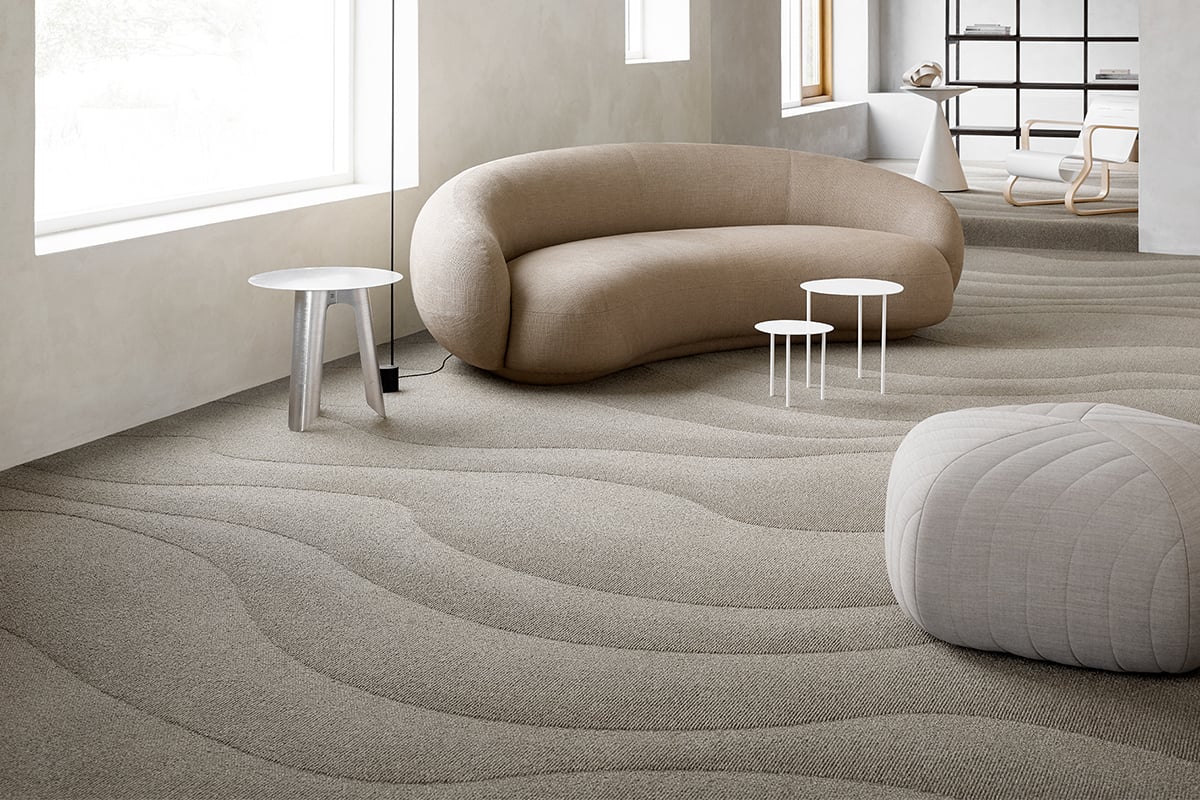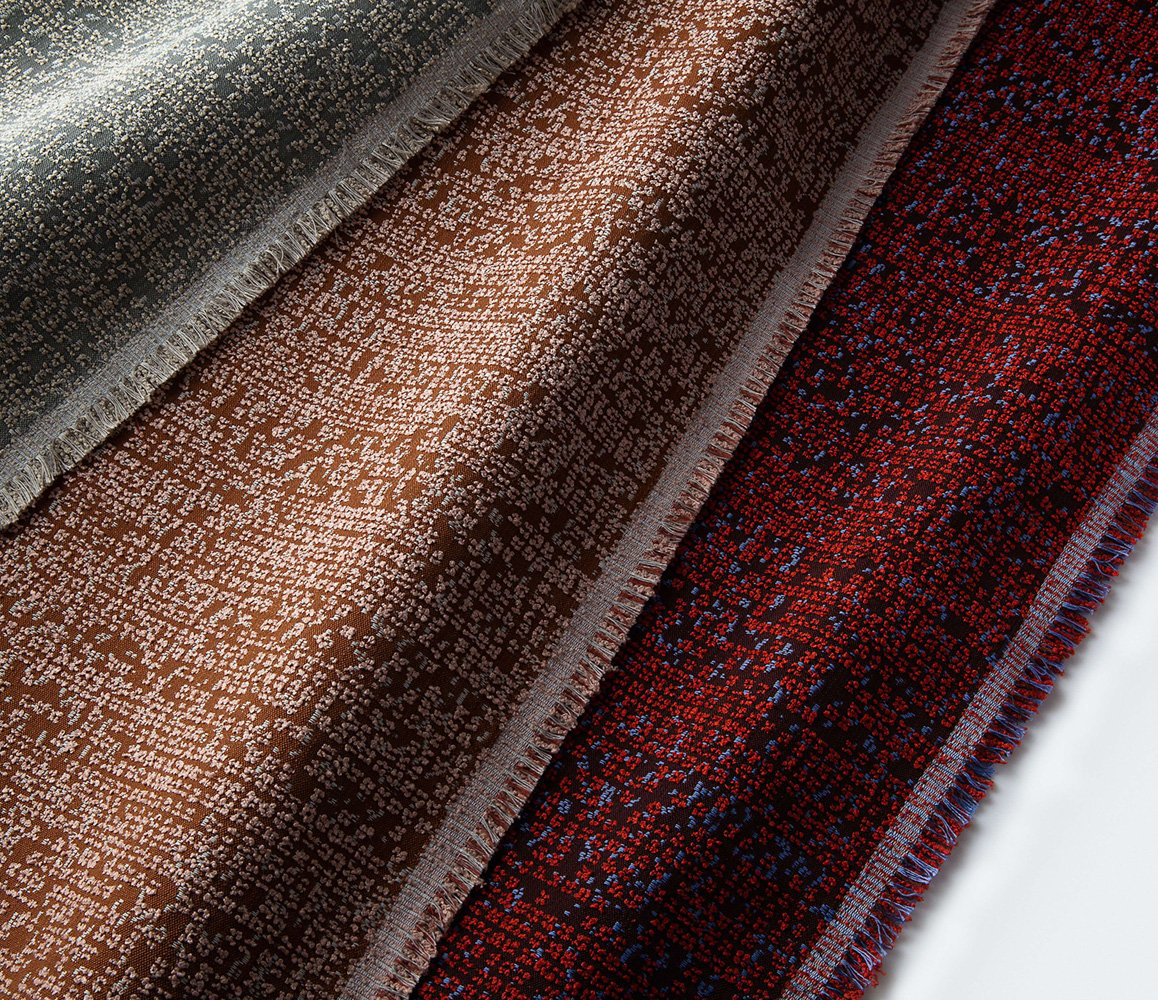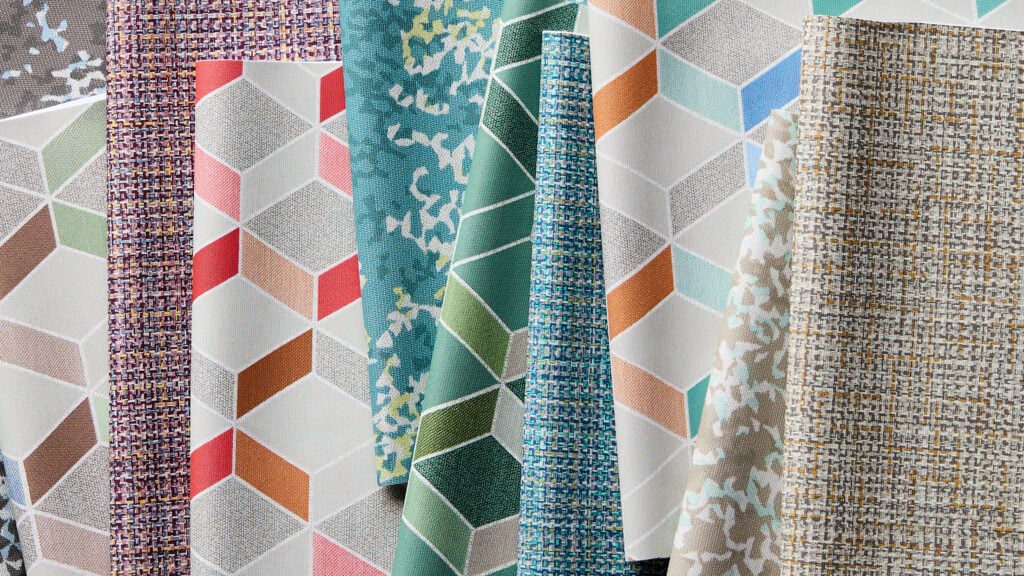
September 30, 2021
Announcing the Winners of the Planet Positive Awards
Civic/Cultural
Public buildings offer a unique opportunity to further the goals of regenerative design. As visible showcases for design strategies and building technologies, sustainable civic and cultural projects can inspire change across the building sector and in society at large.

Jen Masengarb
Executive Director, AIA, Chicago

Kyle Pickett
Environmental Steward, Co-Founder and Executive Director, The William J. Worthen Foundation

Avinash Rajagopal
Editor in Chief, Metropolis
Top Winner

DLRGroup | The Portland Building | Northwest
The Portland Building Reconstruction project consisted of a complete renovation/restoration of the original 1982 building designed by Michael Graves, including new exterior cladding, seismic upgrade, MEP systems replacement, and new interior workplace. The project is LEED Platinum certified and pursuing WELL certification.
The building has been updated to be fossil-fuel free, retrofitted with electric-only mechanical systems, and has brought down potable water use by about 45% per year. The project also tracked and exceeded its goals for the diversity of the project team, with with 30% minority / 10% female journeymen and 33% minority / 17% female apprentices.
Regional Winners
Workplace
Through adaptive reuse, mass timber construction, and a host of other strategies, workplace projects are hitting ambitious milestones for planet-positive design. Many organizations are also using workplace projects to signal their intention to work towards equity and climate justice.

Jen Masengarb
Executive Director, AIA, Chicago

Kyle Pickett
Environmental Steward, Co-Founder and Executive Director, The William J. Worthen Foundation

Avinash Rajagopal
Editor in Chief, Metropolis
Top Winner

Archimania | 663 South Cooper | South
This project reimagines Middle America’s aging commercial corridor building stock as a conduit for 21st century community building, proposing the idea of carbon neutral corridors. archimania began with the purchase and upcycle of two of these commercial buildings on Cooper Street in Memphis, Tennessee, and redesigned them with two varying approaches to energy, to test different strategies. Through a highly analytical design process, the team designed a net-zero energy, carbon neutral building with a financial payback period of less than ten years. This proves the economic viability of the case study as a shift in conventional developer logic.
Regional Winners
Healthcare
With a host of performance criteria to meet and overriding concerns about patient health and safety, healthcare projects present some of the toughest challenges for regenerative design. Yet, through appropriately sized building systems and innovative biophilic design strategies, some projects are able to break new ground on energy and carbon.

Avinash Rajagopal
Editor in Chief, Metropolis

Drew Shula
Founder and CEO, Verdical Group, Co-founder of the Net Zero Conference

Ingrid Spencer
Executive Director, AIA Austin
Top Winners

IA Interior Architects | Orthodontics Only | South
This is the First Net-Zero LEED Platinum orthodontic office in the US and the first LEED Platinum commercial building in the Kendall neighborhood of Miami-Dade County.

Mahlum Architects | Rainier Beach Clinic | Northwest
The Rainier Beach Clinic offers a new model for dialysis care on an urban site previously used as a storage yard for tires, industrial scrap, and derelict vehicles. Biophilic design strategies utilized across the project restore and protect native ecosystems and provide amenities for the building occupants and surrounding community through prominent, public-facing garden spaces.
Multifamily
Housing is a huge challenge across the world—from sensitively designing shelter for the unhoused to building healthy homes at the scale needed for resource-efficient and nurturing communities. These projects meet those challenges without contributing to the climate crisis.

Avinash Rajagopal
Editor in Chief, Metropolis

Drew Shula
Founder and CEO, Verdical Group, co-founder of NetZero Conference

Ingrid Spencer
Executive Director, AIA Austin
Top Winner

Studio 804 | Monarch Village | Midwest
With the introduction of Monarch Village, twelve tiny dwellings expand the Lawrence Community Shelter’s ability to provide supported environments in which individuals experiencing homelessness can quarantine or isolate.
Over the long term the dwellings, which are pursuing LEED Platinum certification, will afford individuals and families staying at the Shelter a commodity that typically evades households experiencing homelessness: privacy. Simultaneously, they would reduce the number of guests sleeping in the dorms, facilitating better social distancing thus keeping the entire population safer from airborne illnesses. These homes are also the first of their kind in North America to feature full, private bathrooms for the residents.
Regional Winners
Hospitality
The places where we gather, eat together, relax, and rejuvenate are obvious opportunities to spotlight the connections between community, health, and sustainability. Despite traditionally tight budgets and complex operational constraints, hospitality spaces can make a huge positive impact on people and planet.

Avinash Rajagopal
Editor in Chief, Metropolis

Drew Shula
Founder and CEO, Verdical Group, co-founder of NetZero Conference

Ingrid Spencer
Executive Director, AIA Austin
Top Winner

Ross Barney Architects | McDonald’s Chicago | Midwest
The design team for this project re-designed the iconic Rock n’ Roll McDonald’s to celebrate the company’s move from the suburbs to downtown Chicago and presented a new vision for a global brand by placing its environmental stewardship front and center.
This LEED Platinum certified project serves as a learning lab for future projects within its typology. In addition to a CLT structure, the project deploys a host of strategies including higher efficiency kitchen equipment and HVAC systems, photovoltaic panels, Solatubes, and carbon cure cement.
By creating a city oasis where people can eat, drink, and meet, it underscores an equitable experience for McDonald’s customers from all backgrounds.
Regional Winners
Education
Educational institutions were among the first in the U.S. and around the world to embrace the green building movement. K-12 and higher-ed campuses today are showcases of best-in-class sustainability strategies, feeding off the both the expertise offered by academic researchers and the creative energy of students.

Paula Melton
Editorial Director at Building Green

Avinash Rajagopal
Editor in Chief, Metropolis

James Wasley
Professor of Architecture, University of Wisconsin-Milwaukee
Top Winner

Miller Hull Partnership & Lord Aeck Sargent Planning and Design, Inc. | The Kendeda Building for Innovative Sustainable Design | South
The Kendeda Building showcases many firsts in sustainable design. It achieved full Living Building Certification in 2021 after proving its net positive energy and water performance after one year of occupancy.
In addition to a host of integrated and ingeniously designed building systems, 25,000 linear feet of 2-by-4 material was salvaged from Atlanta’s Lifecycle Building Center, which sourced the lumber from discarded film sets. The decking was assembled by apprentices hired through local nonprofit Georgia Works!, providing valuable trade skills. Wood salvaged from storm-felled trees on campus and in southern Georgia was used for countertops and furniture.
Regional Winners
Products
No building project today would be able to achieve a high level of performance on energy, carbon, or health without the right building blocks. Architectural and interior products today represent the cutting edge of sustainable innovation, in the built environment and beyond, taking fresh and holistic approaches on all fronts—aesthetics, material innovation, and impacts on human health and wellbeing.

Verda Alexander
Co-Founder, Studio O+A and Climate Activist

Kelly Beamon
Senior Editor, Metropolis

Jean Hansen
Sustainable Principal, HDR

Avinash Rajagopal
Editor in Chief, Metropolis

Lona Rerick
Associate Principal and Sustainable Materials Leader, ZGF Architects
Top Product Breakthrough

Humanscale | Net Positive Products
Humanscale has achieved Living Product certification (LPC) on 25 of their office products. This means that every time any of the 25 products are made it actually leaves the world better off. The certification is the highest standard of climate-forward designations due to its test of measured performance versus design intent. Each individual product is audited across twenty sustainability categories such as climate, waste, and more. Because LPC is so rigorous, only 42 products have been certified to date—25 of those are Humanscale products.
Architectural Systems and Facades

Flooring
Furniture
Kitchen & Bath
Lighting
Paint

Surfaces, Tiles, Materials
Technology & Tools
Textiles
Ceiling Solution

Wall Solution

SPONSORED BY


Latest
Products
8 New Textiles Weave Comfort with Care
With calming tones and sustainable materials, the latest textiles blend beauty, responsibility, and well-being.
Products
8 Sleek Ways to Soften Sound
Discover how sound can shape your space with innovative design elements that enhance commercial interiors.
Viewpoints
Exhibit Columbus 2025: Exploring Site, History, and Community
The fifth edition of the festival pays tribute to the city’s rich Modernist heritage while also re-examining the importance of shared public spaces.



